 VARIATIONS of sign, nor the number of negative roots greater than the number of PERMANENCES. 325. Consequence. When the roots of an equation are all real, the number of positive roots is equal to the number of variations, and the number of negative roots... VARIATIONS of sign, nor the number of negative roots greater than the number of PERMANENCES. 325. Consequence. When the roots of an equation are all real, the number of positive roots is equal to the number of variations, and the number of negative roots...  A Treatise on Algebra ... - Page 282by William Smyth - 1861Full view A Treatise on Algebra ... - Page 282by William Smyth - 1861Full view - About this book
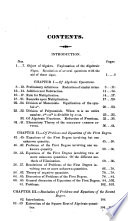 | Bourdon (M., Louis Pierre Marie) - Algebra - 1831 - 446 pages
...PERMANENCES. 331 . Consequence. When the roots of an equation are all real, the number of positive roots is equal to the number of variations, and the number of negative roots is equal to the number of permanences. For, let in denote the degree of the equation, n the number... | |
 | John Radford Young - Equations, Theory of - 1835 - 304 pages
...can v' be greater than v ; hence, necessarily, p=p' and v = v' ; consequently, when the roots are all real, the number of positive roots will be equal to...number of variations, and the number of negative roots equal to the number of permanencies.* CHAPTER II. ON THE TRANSFORMATION OF EQUATIONS. (19.) Algebraical... | |
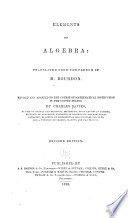 | Algebra - 1838 - 372 pages
...PERMANENCES. 325. Consequence. When the roots of an equation are all real, the number of positive roots is equal to the number of variations, and the number of negative roots is equal to the number of permanences. For, let m denote the degree of the equation, n the number of... | |
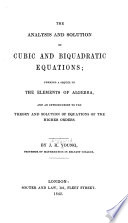 | John Radford Young - Equations - 1842 - 276 pages
...and » = »' Consequently, when the roots are all real, the number of positive roots will be exactly equal to the number of variations, and the number of negative roots to the number of permanencies. It must be borne in mind, however, that whether the roots are all real... | |
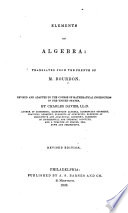 | Charles Davies - Algebra - 1842 - 368 pages
...PERMANENCES. 325. Consequence. When the roots of an equation are all real, the number of positive roots is equal to the number of variations, and the number of negative roots is equal to the number of permanences. For, let m denote the degree of the equation, n the number of... | |
 | Charles Davies - Algebra - 1845 - 382 pages
...PERMANENCES. Consequence. 328. When the roots of an equation are all real, the number of positive roots is equal to the number of variations, and the number of negative roots to , the number of permanences. For, let m denote the degree of the equation, n the number of variations... | |
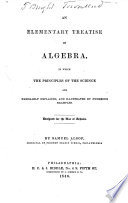 | Samuel Alsop - Algebra - 1846 - 300 pages
...have a greater number of negative roots than there are continuations of sign. Cor. 1. If all the roots are real, the number of positive roots will be equal to the number of variations, and that of negative roots equal to the number of permanencies of sign. Cor. 2. This rule, which is due... | |
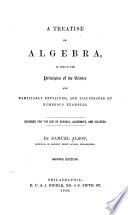 | Samuel Alsop - Algebra - 1848 - 336 pages
...have a greater number of negative roots than there are continuations of sign. Cor. 1. If all the roots are real, the number of positive roots will be equal to the number of variations, and that of negative roots equal to the number of permanencies of sign. Cor. 2. This rule, which is due... | |
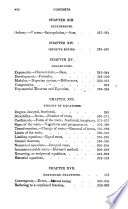 | Stephen Chase - Algebra - 1849 - 348 pages
...362). Therefore, Cor. i. If the roots of an equation be all real, the number of positive roots must be equal to the number of variations ; and the number of negative roots, to the number of permanences. See § 218. 1, 2, 3. § 362. J.) If any term of the equation be wanting,... | |
 | Joseph Ray - Algebra - 1852 - 408 pages
...of ciphers). Therefore, if the roots of an equation be alt real, the number of positive roots must be equal to the number of variations, and the number of negative roots to the number of permanences. (See examples, pages 343, 345.) For example, the equation 0:2+16=0, may... | |
| |